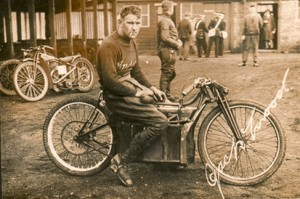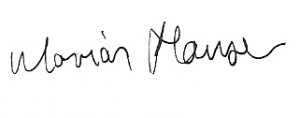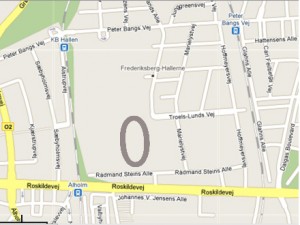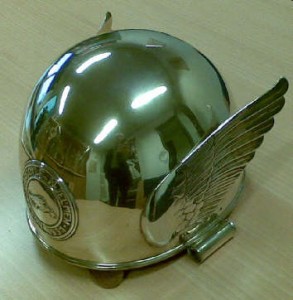Greyhound & motorcycle racing
Facts:
Track name: Roskilde Road Greyhound and Dirt Track.
Track owner: United Speedway Ltd
Track length: 1/3 mile
Surface: Cinders
Dirt Track as Speedway originally was called emerged in Australia on December 15 1923 as an amusement at the Hunter River Society Agricultural & Horticultural Midsummer Electric Light Carnival. Soon the sport spread to England. Motor Cycling reported the first Dirt track meeting to be held on May 7 1927 at Camberley, Surrey.
There is however some discrepancy. Other sources say, it was on February 19th in Epping
In 1928 Dirt track came to Denmark.
Before that there had been track racing in Denmark on tracks described as dirt ovals as early as 1920 – 22 in Bagsvaerd and Koege in 1927. They were not called Dirt tracks because this term simply was not known at the time. The track surface was earth where the grass was scraped away. Neither the surface nor those days bikes were suited for the spectacular broadsiding technique in the bends, which later got developed to perfection with specialized bikes and cinders surfaced tracks. Furthermore these tracks were built by small clubs without professional management, and their lifetime was short. Nevertheless these tracks in English term would have been called dirt tracks
The very first described British style Dirt track in Denmark was built west of Copenhagen near the A1 road from Copenhagen to Roskilde in an area formerly used for flower gardening. Also a track for Greyhound racing was included in the plant. and a cooperation got established between Greyhound Racing Ltd and United Speedway Ltd.
October 14th 1928, Opening meeting:
His Highness Prince Aage had promised to hold the opening speech, but the Danish/Russian Empress Dowager Dagmar’s death and burial came in the way of this. Instead track director Count Raben, held a small but well-formed speech to the audience over the track address system.
The opening meeting was held over 3 race days on October 14th, 16th and 18th.
From there and on to December there were regular race nights with electric floodlight suspended over the track.


The track was rutted, but it had a fine floodlight
The shareholders were prominent investors from Copenhagen, who also formed the management with Count Raben Levetzau as spokesman and executive director. Other members of the mangement were Mr.Harald Langkjaer and Mr. James Fox Esq. England. Track manager was Mr. Harold Chadwick, Denmark Track Racing Co. Ltd., and Royal Prince Aage, Count of Rosenborg was protector for the track.

25.7.1929, The Motor Cycle wrote:
Hamburg has long been a stronghold of track racing in Germany, but hitherto only horse racing tracks have been used. Now a Dirt track, the very first in Germany, has been opened. The inaugural meeting took place recently in the presence of 25.000 spectators in rainy weather. Then there was a race for Danish rider which was won by Morian Hansen in 82,2 secs. Niels Sørensen was second.
29.11.1929, Auto wrote:
Hamburg and Copenhagen are controlled by United Speedway Ltd. Further tracks are planned for, amongst others, Berlin, Leipzig and Hanover
24.01.1930, Auto wrote :
Up to 15 German cities will have tracks constructed, most will be inside existing 550 yds. cycle tracks – but this can be delayed due to the Wall Street crash, said Mr. Bromley, who controls racing at both Copenhagen and Hamburg. The quotes above clearly illustrates a direct connection between the track at Roskildevej and the track in Hamburg.
April 12, 1929 A Copenhagen afternoon newspaper wrote:
Dirt track goes air borne.
The Dirt track Company’s first Air express took off from Kastrup airport at 10 o’clock this morning heading for Hamburg, with Air Cpt. Harald Hansen at the controls and with 8 passengers and 3 speedway bikes onboard.
The bikes were securely fixed in the luggage compartment early this morning. It had been necessary to remove a wheel from each of them.
The cabin was occupied by Tommy Price, and his friend Forest, Jack Wood, Price’s mechanic Thompson, Morian Hansen, Engström, Niels Sörensen and Philipsen.
Many Dirt track fans were met for waving goodbye. The plane is expected to return on Sunday noon 12 o’clock with Sprouts Elder and the other riders, and from 4 pm they will all ride on the Dirt track at the Roskilde way.
The description above shows, that behind the events stood an international party who acted professionally as a Sport & Event organization with firm meeting schedules more places in Europe, where also Munich joined, and who also provided transportation to secure that the riders came forward in ample time. In its substance it pointed towards nowadays SGP organization.
In 1928-29 and -30 a regular schedule with two weekly meetings got introduced.

On a current Google map and by means of the old city map the location of the dirt track is inserted.
The area today is a multiple sports- and athletic ground.
A search for the place where the cradle of Danish speedway stood is hopeless. Absolutely nothing is left there to remind you of the track’s existence.
The British riders:
In order to present the sport best possible, a selection of mainly British riders from the Manchester White City track were contracted from the opening day until the end of 1928. They were Dick Hayman, Ted Egerton, Mark Sheldon, Clem Beckett, Arthur Greenwood, Ernie Greenall and John Crump (all England), together with Keith McKay (Australia) and Stewie St. George (New Zealand) and others. At the end of the seas in December Dick Hayman had won 20 raced, thereof 6 in a row. Stewie St. George’s track record was 1,44 minute for 4 laps.
Clem Beckett and Dick Hayman stayed i Copenhagen through the winter and returned to England at the end of June 1929.
Season opening March 22nd 1929. Among the first foreigners to come were Ernie Greenall, Ted Cowley and T. D. Ainthorpe. Greenall won every time he rode, which caused Count Raben to cable to England and ask for a rider “capable of beating Grenall”. Then the Irishman “Ginger” Lees got dispatched to Copenhagen, where he immediately lowered the track record to 1,39 minute.
Harold Riley Lees nicknamed ”Ginger” for his red hair.

Ginger Lees with a victory scarf
Ernie Greenall lost his life in a crash on the track on April 26th. The Danish riders Walther Ryle and Niels Sorensen represented his colleagues and friends at the funeral in Oldham by Manchester. His rider colleagues collected money an had a brass memory shield mounted on a wall at the track. Unfortunately this shield later got lost and as late as 2009 in vain searched by a Danish family member of his.

Ernest Robertson Greenall
The accident caused the authorities to impose a change in the track’s rule book, banning inside overtaking. Shortly after the same rule got adopted i Danish Motor Union’s rule book with a small modification. If the overtaken rider rides far out on the track, inside overtaking might be permitted.
Lees’ merits in Copenhagen got surpassed in June by George Reynard, who lowered the track record to1,34 minute. Lees could not accept such, so immediately he flew to Copenhagen and lowered the record to 1,28 min., (unbelievable 87,5 km/h).
Every new track record released an extra prize sum of 100 DKK, which in 1929 was quite a lot of money. Every Danish track record released 50 DKK. In April 1929 the Danish track record was 1,40,4 minute belonging to Kaj (Bugatti) Hansen.
November 1st 1929 a team from Preston in England on their way back from a contract in Hamburg came to Copenhagen. An unofficial Nations match between Denmark and England got promptly organized over 3 days, November 1st, 3rd and 7th. According to our programme from the 7th, he Danes won the aggregate. Ham Burril and Claude Rye each won a heat.

From a contemporary programme, sent to us, no. 60 is identified as Len Meyerscough,
no. 10 as Jack Chiswell. The others were Ham Burrill, Joe Abbott, Frank Chiswell,
Claude Rye,Norman Evans, Jack Wood, Johnnie Broughton;
Jimmie Stevens and Edward Kell.

Jack Wood’s broadsiding skill.
Dirt track became “en vogue”
The Copenhageners flooded the track by tenth of thousands. In particular it was the rider’s skidding technique – called broadsiding – in the bends, that fascinated the fans. Famous people – among those several from the theatres and movies – came in, partly to watch the events, partly to be seen themselves. Dust on their fine clothes bothered no one.
The opening meeting had 8000 spectators, only two months later 25.000 came on a rainy day.
In January 1929 a newspaper wrote, that there was no complaint over the exhaust noise although the bikes had no silencers mounted. But there were neighbors, who complained over the loudspeakers.
Star actress Carina Bell congratulating Morian after a victory.
The Golden Helmets:
The race series called “the Golden Helmet” was initiated by the Dirt Track Magazine in Copenhagen in 1929 and 1930. All heats went over 4 laps with points given 5-3-2-1. The winner of the day’s final heat recieved the helmet and 10 DKK for every day he kept it.
The rider, who by the end of the season had collected most points, won the helmet for good. In 1929 won Kaj “Bugatti” Hansen the helmet.
on high shoulders by his fellow riders Ejnar Hoyer and Hans Bitsch
with Engstrom dragging his bike behind.
And in 1930 Morian Hansen won with a total of 35 points.

Morian Hansen’s golden helmet in a more desolate state.
(Picture from an auction house in Germany)
The “Golden Helmet” series in 1931 was won by Svend Aage Engstrom with 24 points. Unfortunately we have no picture of Engstrom with his “Golden Helmet” on. This helmet was sponsored by the oil company “Gargoyle oil”
Engstrom’s helmet is by courtesy of his family displayed in a vitrine in DMU’s head office in Brondby, Copenhagen
Foreign riders crowded on the track,

High and Low, The American rider Lloyd “Sprouts” Elder 6′ 3″ tall
looking extra tall on the very low Douglas Bike.

“Tiger” Jack Wood often visited Roskildevejens dirt track
The other riders.
Among the first Danish riders contracted to the dirt track were some already known from other kinds of motor cycle racing. Soon a group of local heroes grew up with names like Baltzer Hansen, Henning Hansen nicknamed “Morian”, Kaj Hansen “little K” and the renowned Svend Aage Engstrøm. The meetings gained extra color by participation from foreign riders like the Germans Hans Wunder and Alfred Rumrich, the American Lloyd “Sprouts” Elder, the Irish rider Ginger Lee and the female rider Eva Askquith only to mention a few.

 Female riders,
Female riders,
Women also rode motor cycles. but women who daringly challenged the dirt track top riders were sensational.
The most famous female rider was Irish Fay Taylour (1904 – 1983), who traveled worldwide and rode on tracks in Australia, New Zealand and South Africa. It is uncertain whether she rode in Copenhagen. But her contemporary, the Yorkshire girl Eva Asquith surely did with success late in 1928 and in May 1929 on her Douglas.
Her career began in 1926 in South Africa, where she won several races.
Whether it was masculine jealousy or genuine respect for the female sex is uncertain, but in England female dirt track riding got banned in 1930 based on fear for diminishing their fertility. Soon the Danish Motor Union followed and denied issuing rider’s license to women. This ban lasted, until it got lifted in 1968.

Miss Eva Asquith (1905 – 1985) from Yorkshire on her Douglas..

“The beauty and the beast”, Morian Hansen chasing Miss Asquith.
The Conflict:
Many of the riders were semi- or full professionals living by the prize money and the wages the organizers would pay them. That could be tough for some, and for most of them two weekly meetings were not enough. They rode on other tracks too like Odense and Vejle, and some of them signed contracts with the track in Hamburg.
Certainly the riders had noticed the amount of spectators, and as they saw themselves as leading actors, they wanted a greater part of the income.
Further they were unhappy with the facilities in the pit. The only shelter was a wooden shed filled with garbage, where they could stand in case of rain, and there was no access to hand- and face washing.
They demanded higher prize money and wages. The management denied, and instead lowered the prize money to a third. The riders stroked and finally they got better paid.

The Dirt track bikes arrive at the track. Approx. 1931
Closed and re-opened
Most of 1932 the Dirt track lay idle, and materials used for the safety fence and other parts were sold to Kolding and re-used there for construction of a new Dirt track. The idle period lasted until September 1933 when Roskilde Road Dirt track re-opened in the presence of 20.000 spectators
The greedy government.
In 1929 the state demanded an amusement tax on 30 % of the entrance fee. In 1933 this got raised to 40 %. All Danish track owners protested, but a high court decision in 1934 stated, that dirt track was not sport but show, and the tax must be paid. Shortly after the tax got raised to 60 % and kept there until 1949, when it got lowered to 20 %, before it finally got removed. The tax reduced the income to a level that did not pay off, and many tracks closed.
Roskildevej Dirt Track closed in 1936 after having played a significant role in the history of Danish Motor cycling.
At that time Morian had long lived as professional rider in England and taken the 11th place in the 1936 WC final. But that is quite another story.
If you posses any information, stories, pictures or other material regarding this track,
you kindly would make available or this website, Please do so by proceeding
to the contact page or by using the e-mail address: sk@speedwaylife.com
Thank you very much in advance.






